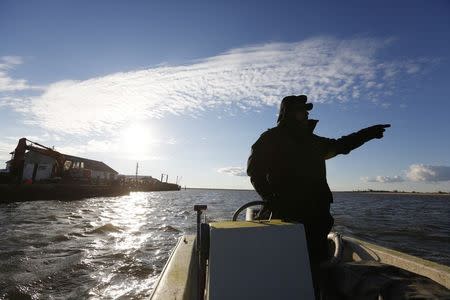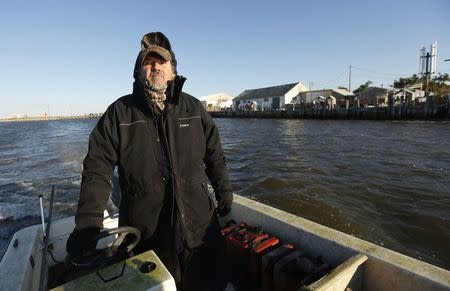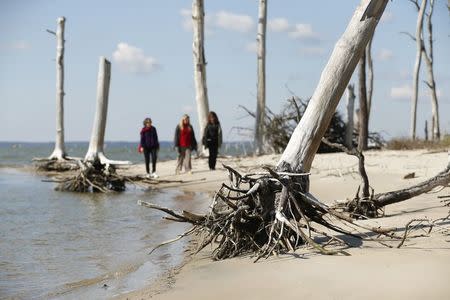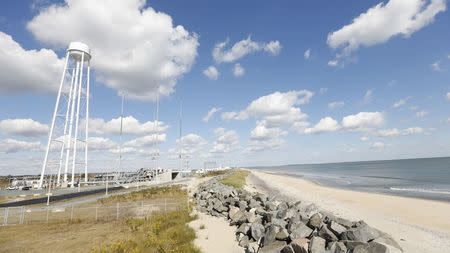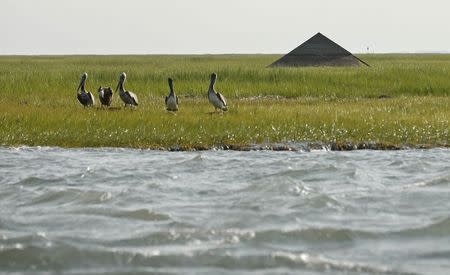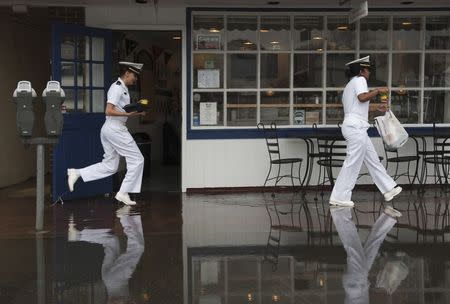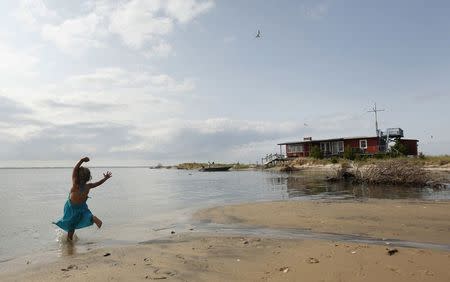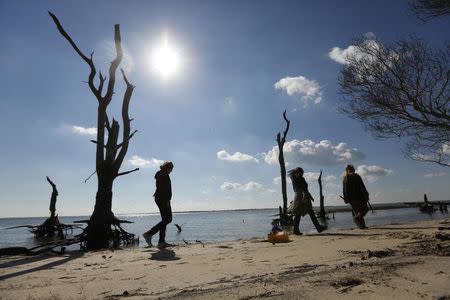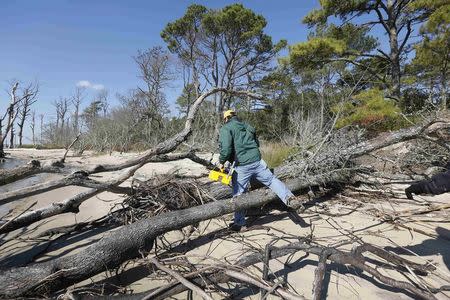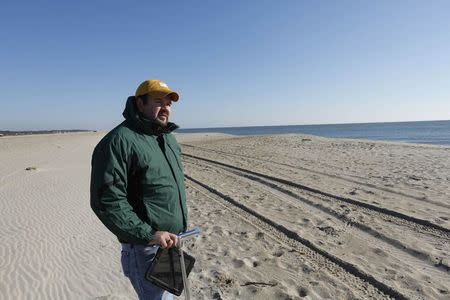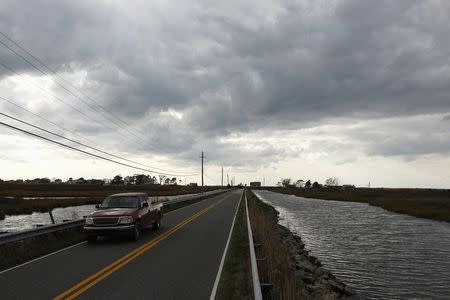Special Report: As seas rise, a slow-motion disaster gnaws at U.S. shores
By Ryan McNeill, Deborah J. Nelson and Duff Wilson SAXIS, Virginia (Reuters) - Chincoteague is the gateway to a national wildlife refuge blessed with a stunning mile-long beach – a major tourist draw and source of big business for the community. But the beach has been disappearing at an average rate of 10 to 22 feet a year, as a warming planet and other forces lift sea levels. The access road and parking lot have been rebuilt five times in the past decade because of coastal flooding, at a total cost of $3 million. Officials who run Chincoteague National Wildlife Refuge say they face a losing battle against rising sea levels. In 2010, they proposed to move the beach to a safer spot, shrink the parking lot, and shuttle in tourists by bus. The town revolted. Chincoteague wants the federal government to continue to rebuild rather than retreat. Four years on, after a series of angry public meetings, the sea keeps eating the shore, and the government keeps spending to fix the damage. The people of Chincoteague are engaged in a battle at the water’s edge against rising seas. All along U.S. shores, people, businesses and governments are confronting rising seas not as a future possibility. For them, the ocean’s rise is a troubling everyday reality. Reuters gathered more than 25 million hourly readings from National Oceanic and Atmospheric Administration tide gauges at nearly 70 sites on the U.S. coast and compared them to flood thresholds documented by the National Weather Service. The analysis was then narrowed to include only the 25 gauges with data spanning at least five decades. During that period, the average number of days a year that tidal waters reached or exceeded NOAA flood thresholds increased at all but two sites and tripled at more than half of the locations. The coastal flooding is often minor. Its cumulative consequences are not. As flooding increases in both height and frequency, it exacts a toll in closed businesses, repeated repairs, and investment in protection. In effect, higher seas make the same level of storm and even the same high tides more damaging than they used to be. In Charleston, South Carolina, a six-lane highway floods when high tides prevent storm water from draining into the Atlantic, making it difficult for half the town’s 120,000 residents to get to three hospitals and police headquarters. In Annapolis, Maryland, home to the U.S. Naval Academy, half a foot of water flooded the colonial district, a National Historic Landmark, at high tide on Chesapeake Bay during rainstorms on April 30, May 1, May 16 and Aug. 12. Engineers say there are three possible responses to rising waters: undertake coastal defense projects; adapt with actions like raising roads; or abandon land to the sea. Lacking a national strategy, the United States applies these measures haphazardly. Congress actually recognized global warming way back in 1978 with passage of the National Climate Program Act. The law aimed to “assist the Nation and the world to understand and respond to natural and man-induced climate processes and their implications.” But after $47 billion in direct federal spending on climate change research, Congress hasn’t passed a major piece of legislation to deal specifically with the effects of rising sea levels. “In the U.S., you have best data set on what’s happening in the world, and yet it’s not used in public policy,” said Robert Nicholls, professor of coastal engineering at the University of Southampton in England and a contributor to the U.N.-sponsored Intergovernmental Panel on Climate Change. The lack of clear policy is evident in Chincoteague, population 3,000. Most visitors come for the mile of ocean-facing public recreational beach, according to the U.S. Fish and Wildlife Service, which manages the refuge. Visitors can drive with all of their gear right up to the edge of the beach to park in a 1,000-space crushed-shell lot. As erosion worsened, the cost to American taxpayers of repeated destruction of the parking lot and causeway from rising sea levels would only increase, Fish and Wildlife officials said. In 2010, the agency proposed moving the beach to a less-endangered site. Town leaders pointed to a survey in which 80 percent of visitors said they would not continue coming to the beach if they had to park in town and take a shuttle. Residents also feared that Fish and Wildlife would let the southern end of Assateague Island erode away if the beach were moved. A series of angry meetings with local Fish and Wildlife officials resolved nothing. In 2012, Chincoteague got a hearing at the U.S. Capitol on the proposal. Wanda Thornton, an Accomack county supervisor, testified that local residents feared for their jobs. The agency released a draft plan in May that would relocate the beach to the less unstable site, but keep the parking area at its current size, as long as there’s enough land to do so. As many residents feared, this plan would not replenish the sand at the southern end of Assateague or at the new site as they erode. A public hearing in Chincoteague on June 26 failed to settle the matter. (This is an abridged version of a special report. The full package, including unabridged text, interactive graphics and video, is on Reuters.com at http://reut.rs/1nyd8pK ) (Edited by John Blanton)

